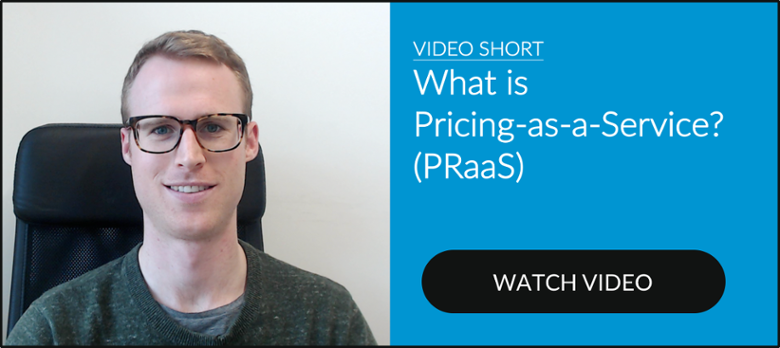On average, a 1% price increase translates into an 8.7% increase in operating profits (assuming no loss of volume). Unfortunately, up to 30% of the pricing decisions companies make every year fail to deliver the best price and it’s particularly troubling considering that the amount of data now available provides companies with an opportunity to make significantly better pricing decisions. For those able to successfully use the data, the value can be substantial.
The secret to increasing profit margins is to harness the data to find the best price for your product.
Finding the optimum price
For every product, companies should be able to find the optimal price that a customer is willing to pay.
Ideally, they should factor in highly specific insights that might influence the price, e.g. the cost of the next-best competitive product versus the value of the product to the customer, and then arrive at the optimum price. If you only have a few products, this kind of pricing is straightforward.
It becomes more problematic when product numbers increase. Around 75% of a typical company’s revenue comes from its standard products, which can run into thousands.
Manual practices for setting prices make it virtually impossible to see the pricing patterns that can unlock value. It’s simply too overwhelming for large companies to get granular and manage the complexity of these pricing variables for thousands of products without pricing software.
Do your marketing/sales teams develop prices based on simplistic factors such as the cost to produce the product, standard margins, prices for similar products, volume discounts, etc?
Do they fall back on old practices to manage the products as they always have or cite “market prices” as an excuse for not sorting the issues? Perhaps worst of all, they rely on “tried and tested” historical methods, such as an across-the-board 10% price hike on everything.
Four steps to turn data into profit
Listen to the data
Setting optimum prices is not a data challenge but an analysis challenge. The best B2C companies know how to interpret and act on the wealth of data they have, but B2B companies tend to manage data rather than use it to drive decisions.
Good analytics can help companies identify how factors that are often overlooked, such as the broader economic situation, product preferences, and sales representative negotiations reveal what drives prices for each customer segment and product.
Automate
It’s too expensive and time-consuming to analyse thousands of products manually. Automated systems can identify narrow segments, determine what drives value for each one, and match that with historical transactional data.
This allows companies to set prices for clusters of products and segments based on data. Automation also makes it much easier to replicate and tweak analyses so it’s not necessary to start from scratch every time.
Build skills and confidence
Implementing new prices is as much a communications challenge as an operational one. Successful companies use change programs to help their sales forces understand and embrace new pricing decisions.
Companies need to work closely with sales reps to explain the reasons for the price recommendations and how the system works so that they trust the prices enough to sell them to their customers.
Equally important is developing a clear set of communications to provide a rationale for the prices in order to highlight value, and then tailoring those arguments to the customer. Intensive negotiation training is also critical for giving sales reps the confidence and tools to make convincing arguments when speaking with clients.
The best leaders accompany sales reps to the most "difficult" clients and focus on getting quick wins so that sales reps develop the confidence to adopt the new pricing approach.
Actively manage performance
To improve performance management, companies need to support their sales forces with useful targets. The greatest impact comes from ensuring that the front line has a transparent view of profitability per customer and that the sales and marketing organisation has the right analytical skills to recognise and take advantage of the opportunity.
The sales force also needs to be empowered to adjust prices itself where necessary (to an agreed level) rather than relying on a centralised team. Incentives may also need to be changed alongside pricing policies and performance measurements.
Companies in industries as diverse as software, chemicals, construction materials, and telecommunications can achieve impressive results by using big data to inform better pricing decisions. A profit margin lift of between 3% and 8 % can be achieved by setting prices at much more granular product levels.
In some cases, it can be up to a 20% increased margin for selected products. To get the price right, companies should take advantage of big data and invest enough resources in supporting their sales reps. The alternative will be paying the high price of lost profits.
Related Posts
This is How You Get Better at Pricing Your Products
10 Tips for Hitting the Pricing Nail on the Head
10 Pricing Strategies to Increase Your Profits
Sources
http://www.mckinsey.com/business-functions/marketing-and-sales/our-insights/using-big-data-to-make-better-pricing-decisions


